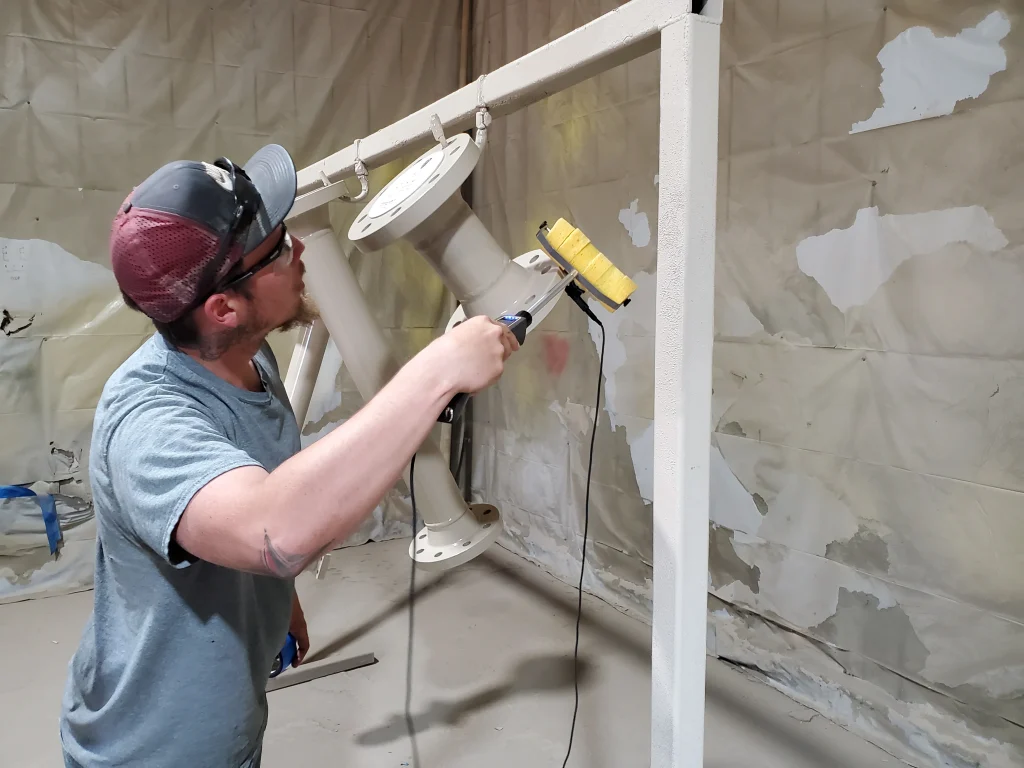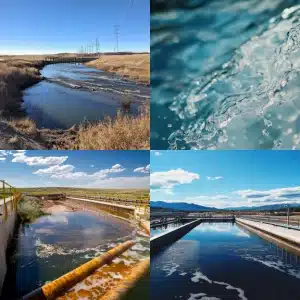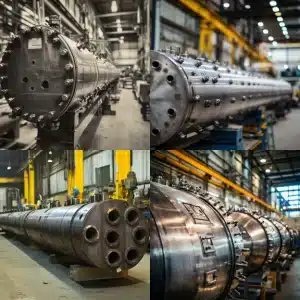
Which theory of failure is used in designing pressure vessels and why?
When designing pressure vessels, the most commonly used failure theory is the Maximum Principal Stress Theory, also known as Rankine’s Theory of Failure. This theory is particularly suitable for brittle materials, and while pressure vessel materials are generally ductile, the theory provides a conservative approach for design, ensuring safety.
Here’s why the Maximum Principal Stress Theory is used for pressure vessels:
This theory is relatively straightforward and easy to apply. The main focus is on the principal stresses, which are critical in determining if the material will fail.
- Conservatism:
As mentioned, this theory is more conservative, especially for ductile materials. Using a more conservative approach is desirable in applications where safety is a primary concern, as in the case of pressure vessels.
- Historical Precedence:
Over the years, this theory has been used extensively in the design of pressure vessels, creating a sort of industry standard. The empirical data and experience gained over time have reinforced its suitability.
- Safety Factor:
Pressure vessel codes usually incorporate safety factors. When combined with a conservative failure theory, this ensures that the pressure vessel will perform safely under various conditions.
Many international codes and standards for pressure vessel design, like the ASME Boiler and Pressure Vessel Code (BPVC), use criteria that align with the Maximum Principal Stress Theory. Adhering to these standards is crucial for ensuring safety, achieving certifications, and avoiding legal complications.
However, it’s essential to note that while Rankine’s Theory is commonly used, the exact approach and criteria for design might vary depending on the specific application, material, and operating conditions of the pressure vessel. Other theories, like the Maximum Shear Stress Theory (Tresca) or the Von Mises Yield Criterion, can also be considered in certain contexts. Engineers always need to be aware of the standards and codes applicable to their specific design scenario.
- Material Behavior and Ductility:
Most pressure vessel materials are ductile (e.g., carbon steel, stainless steel). While the Maximum Principal Stress Theory (Rankine’s Theory) is inherently conservative and ideal for brittle materials, other failure criteria like the Maximum Shear Stress Theory (Tresca) or the Von Mises Yield Criterion are more representative of ductile material behavior. For many engineering applications, the Von Mises Criterion (often used in combination with finite element analysis) provides a more accurate representation of how ductile materials yield. But as pressure vessels are critical components where catastrophic failure can be devastating, the use of a more conservative criterion, like Rankine’s, serves as an added layer of protection.
- Complex Loading Scenarios:
Pressure vessels, especially those used in industrial applications, can be subjected to complex loading conditions. These may include internal or external pressures, thermal loads, dynamic loads, and more. In such cases, understanding and calculating the principal stresses becomes vital. Using the Maximum Principal Stress Theory aids engineers in evaluating the most critical stress scenarios, which, if exceeded, might lead to vessel failure.
- Evolution of Codes and Standards:
Over the years, as more research and practical knowledge have accumulated regarding material behavior and failure modes, international codes and standards have evolved. While some modern pressure vessel designs might consider more sophisticated analyses or different failure criteria, adherence to established codes remains paramount. For many industries and regions, this means using Rankine’s Theory as the foundation for design.
- Design Versatility:
Despite its conservativeness, using Rankine’s Theory allows designers some versatility. For instance, while designing for the worst-case scenarios, they might account for factors like corrosion allowances, potential fatigue, or wear and tear. By ensuring the vessel can handle stresses well below the failure limit, its lifespan and reliability are enhanced.
- Cost Considerations:
A balance always needs to be struck between safety, functionality, and cost. While the Maximum Principal Stress Theory might sometimes result in slightly overdesigned and potentially more expensive vessels, the cost of failure – both in terms of human safety and economic implications – is much higher. Therefore, it’s a worthy investment to use a conservative approach in this context.
In conclusion, while there are various theories of failure available, and modern computational tools can handle complex stress analyses, the design of pressure vessels often favors conservativeness. This ensures that these critical components remain safe under a broad range of conditions. However, engineers must remain updated with evolving codes, material research, and analysis techniques to design vessels that are both safe and efficient.




